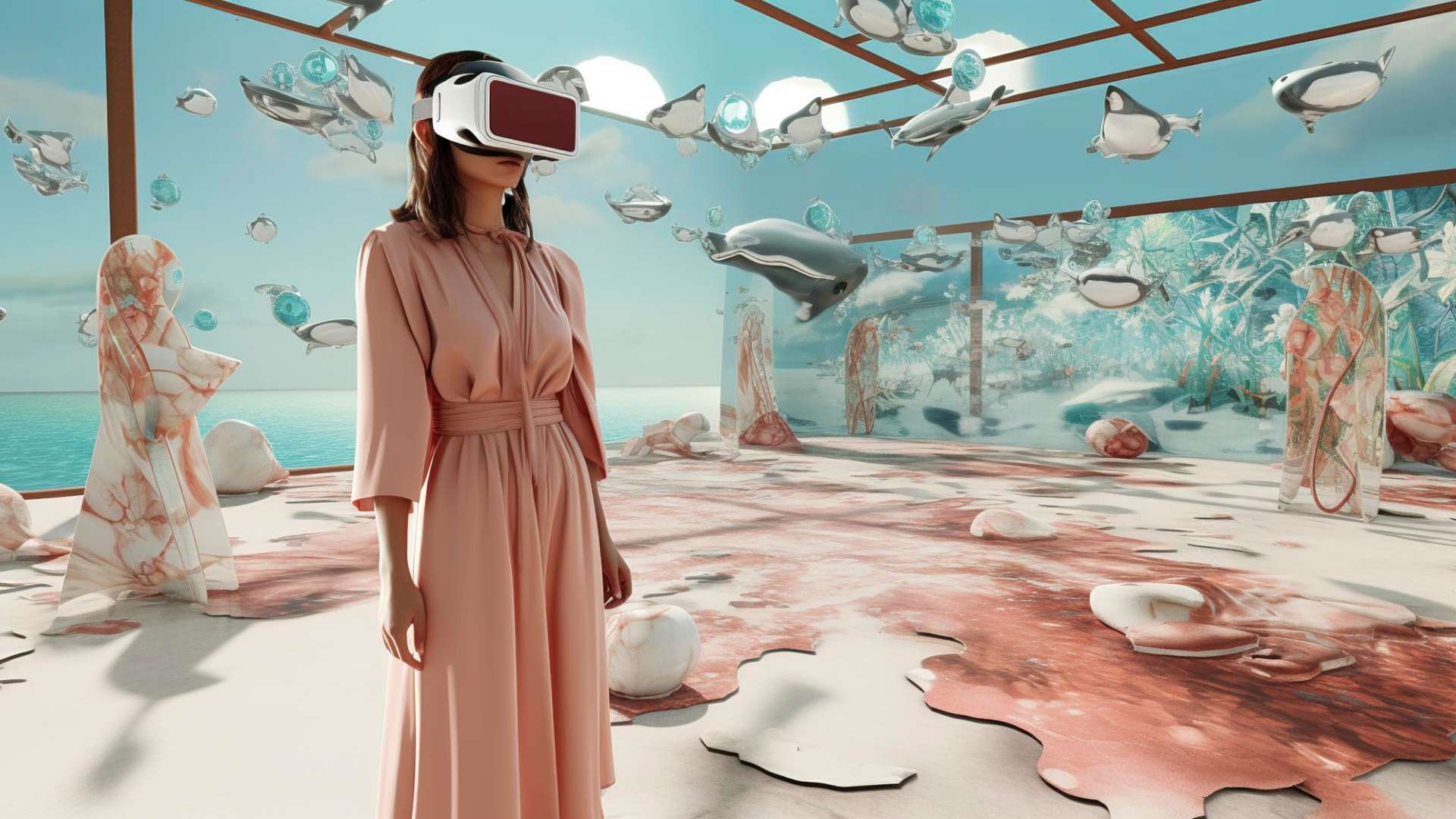As an industry that’s been completely physical for centuries, moving fashion successfully into digital product creation (DPC) will not be a quick or easy task. It’s not just a matter of a business deciding that it’s going to design digitally, followed by demonstrations of 3D authoring systems and simulation environments, followed by selecting a vendor, and then deploying the 3D system and calling it a day. It’s fair to say that this was the general approach over the last twenty years, when 3D was in its infancy, but today, as more and more brands begin to think more holistically about what it means to create products digitally, this is only a small part of a much bigger picture.
For one thing, the technology landscape is more complex. Buying into 3D is no longer a matter of connecting a couple of technologies – i.e. a material scanner and a 3D authoring tool). Things have matured considerably over the last twenty years and today the technology landscape is made up of a larger group of processes, solutions and even services that together make up a much-extended 3D ecosystem – hence the change in name from purely “3D” to the more all-encompassing “DPC,” which is a re-prioritisation and re-scoping task that many brands are now beginning to reckon with.
That technology evolution has picked up a much higher pace in recent years, driven by bidirectional integrations between interrelated solutions, and catalysed even further by the pandemic. In place of just one or two isolated solutions, the typical DPC technology stack now takes in a raft of different products, environments, and tools that collectively support a much broader process scope: designing, developing, prototyping, and verifying numerous product types within virtual and collaborative environments.
The many use cases, opportunities, and the value created by a ‘mature’ DPC ecosystem operating across the value-chain can be significant, and they can vastly exceed the ROI potential of the narrower 3D strategies of the past. But the fact is that scaling and maturing to meet these new possibilities is not easy, and many businesses fail in their pursuit of what they thought was a simple switch over from working in 2D to working in 3D.

Today we have the pleasure to work with many of the world’s leading fashion businesses on multiple projects, some of which include precisely this transition from 3D to DPC. It’s important to realise, though, that the brands that are the furthest ahead in this area may be already well into their second decade of digital design. These are not companies that are new to 3D or digital product creation; they are the businesses that have invested heavily for years, and that continue to look over the technology horizon for new opportunities to expand. The difficulty comes when brands, retailers, and manufacturers (there is, after all, a great deal of 3D expertise in the supply chain today) who are new to 3D see the results that those early adopters have realised, and believe they can hit a similar target in a much shorter span of time.
Unfortunately there is no shortcut to scale, and scale is, frankly, the major challenge facing any fashion business wishing to embrace DPC in a comprehensive, enterprise-wide way.
We are often asked how businesses can scale DPC to support multiple use-cases both downstream toward e-commerce, and upstream to development and manufacturing. Extending the value of digital assets in both directions should, after all, be the ultimate objective – increasing the usage of digital assets in consumer-facing scenarios, targeting digital fashion business models, and matching digital twins to the physical counterparts that must eventually be produced.
The fact is that there is no easy answer to this question. In our experience, it’s more a matter of knowing what it is that each individual business wants to achieve, by adopting and maturing DPC. Once they understand their objectives, they can then start to develop a plan on how to reach their journey’s end. In our experience, the main goals of DPC (and one that is often missed by brands that see “3D” as a quick fix) is for companies to ‘accept change’ and to adapt their business strategy, solution modelling, and processes linked to new market realities. As I’ve mentioned, change and opportunity are everywhere, up and downstream, and a comprehensive digital product creation strategy can be the key to unlocking the right mindset to overcome challenges and seize new possibilities.
With that in mind, if your organisation is weighing up the jump to working in 3D, or looking to scale what was, pre-COVID, a small-scale or single-category pilot, it’s important to be prepared for your DPC journey, rather than diving into the deep end and assuming that buying some licences to a 3D authoring tool and upskilling or hiring in 3D designers will get you there.
We have seen businesses – more than I care to mention – go down this road, only to find that the “3D project” is not able to deliver against perceived business expectations, or worse still it’s quickly been classified as a failure by the management team. It’s very rare in these scenarios that 3D technology itself is to blame; instead the issue is cultural, and it originates from a tendency to frame DPC as being an easy target to hit, when in fact that label captures a host of different targets that need to be hit at almost every stage of the value chain.
Our recommendation, then, is that businesses should start by focusing on the low hanging fruit (the easier wins of DPC) and build the capabilities to become more mature, and productive (set realistic expectations, project phasing and milestone deliverables) over a reasonable time. Implementing a DPC strategy, and building out the related ecosystem processes and solutions, is something that has to be done right to deliver the desired positive outcomes.
Often businesses try to implement DPC with a limited technology stack (scanner, 3D authoring tool) that is simply incapable of delivering the desired throughputs, efficiencies, qualities, and without thinking about the long-term goals, or aligning themselves with the primary strategy.

Today, we come across many businesses that are still stuck in what we call the experimental stage when it comes to DPC, rather than DPC becoming an efficient set of interoperable solutions, sharing data and processes that have been optimised and can operate seamlessly and efficiently within the DPC-ecosystem. Similarly, we also find that where 3D initiatives have been successful, their results have been focused in a single product category, a single division, or as part of an initial pilot – something that they then find difficult, if not possible, to scale to the volumes that the business requires so that they can create both the virtual and physical garments/footwear/accessories/hardware product collections, each with the targeted levels of output to support the physical collection workflows.
Only when businesses can get to these higher levels of virtual product output, will they be able to enable both a physical and virtual collection, that can be used in both the downstream (e-commerce and metaverse applications are the obvious use cases here), and within the upstream (virtual design, development, bill of materials, bill of labour, environmental impact measurement, and sustainability, to mention just a few of the supporting use-cases).
To put things into context, it can take a trained 3D design artist half a day to tackle the following tasks:
- test the physical materials
- scan them and put them into repeat
- manage the colour process
- select the block
- create the pattern styling details
- select the correct avatar that relates back to the block
- add the materials at the correct scale, along with the new design features (seam types, stitching details) including new colourways, trims (buttons, zippers, press studs), and components (embroideries, badges, motifs).
And this is just a short ‘high-level example’ of the 3D workflow process – there are additional stages I haven’t mentioned, and much more that needs to happen in order for even the initial stages that effective 3D asset creation to be successful. Material scanning alone can take anywhere from 20 to 40 minutes on average (relative to the material’s complexity, considering the differences in plains, prints, plaids). Then there’s material physical testing that can take anywhere between 40 and 60 minutes per material type, using a semi-automated process. Design and development might take 30-60 minutes, assuming that we are working on a new style.
Then there’s the rendering process, relative to the required use-case quality (internal sampling vs e-commerce virtual twin) desired to serve the specific use-case, this may take anywhere from 20-60 minutes on average.
The above list of processes is by no means exhaustive but rather the main activities involved in delivering a 3D product and does not include any administration inside or outside the solutions that make up today’s DPC ecosystems. And those solutions are now more complex than ever, taking in:
- CAD systems (textiles, illustrations, knitting, weaving, embroideries, others)
- Body & Feet, materials, trims, components, packaging scanners
- Size surveys and recommendation datasets
- Avatar Design & Development (parametric digital replica of a human body, digital fit avatar to replicate a mannequin)
- Digital Material Platforms
- 3D authoring solutions (Apparel, Footwear, Hardgoods), several of which can only support a single product sector e.g. Apparel/Footwear/Hardgoods/Packaging
- Digital Assets Management (libraries of digital assets, including renders stored in multiple sizes and formats)
- Computer Generated Images (Apparel, Footwear & Hardgoods) focused more on the downstream aesthetics, and product configurators
- Digital Colour Management
- Rendering Engines
- Virtual Try-on Engines
Taking account of the sheer breadth of that solution landscape, it should be no surprise that integration and interoperability is one of the key attributes of effective DPC, and this places a burden on both the supporting IT teams that are there to help the business users by enabling interoperability across what is today a complex DPC technology landscape, and on DPC vendors who are required to support Open APIs and file format standards. The role of artificial intelligence in driving DPC can also be crucial. With the use of AI, businesses can dramatically increase productivity in numerous ways that are too far outside the scope of this article.
As intimidating as that list of potential solutions can be, it’s important to remember that each of these serves a different element of that comprehensive cultural change I mentioned before. The reason so many brands, retailers, and manufacturers are building out their DPC ecosystems is because they want to bring their products to life, digitally, to keep pace with an increasingly digital world.

Every solution category I listed above, and every step of the journey from initial concept design to virtual photography is aimed at the same common objective: moving from an idea on paper to practical reality, across design, development, sampling, refinement, production and showcasing.
Working backwards from that goal, start by defining what it is that the business wants to achieve by deploying DPC. Once you understand the high-level business objectives, you can then define your business use-cases, supporting the downstream e-commerce workflow with virtual twins, or products displayed on real-life fashion models. Perhaps the business wants to improve the way it designs, and develops samples, but instead of physical sampling they want to deliver virtual samples, or that want to become more sustainable and understand the environmental impact a product will make even when it’s in a virtual world.
Each of those goals will correspond to one or more technology possibilities, and each of them can be approach in its own time – provided you stick to the central objective of bringing products to life in a new way, and provided you recognise that achieving that aim will require a lot more than just buying a single, off-the-shelf 3D solution. While you can never guarantee success, defining the correct business needs, use cases, digital journey, and project phasing will greatly reduce the risk of product failure by taking a methodical and intentional approach to how you deploy DPC.
So far this article has focused on what it means to move from thinking about 3D to thinking about DPC at the individual brand level, but if we take these same conclusions and extrapolate them industry-wide, we can build a picture of what the key capabilities will be for fashion as a whole to genuinely mature and scale its approach to digital product creation:
- We need to be able to scan and collect body data at scale and share with our pattern/last makers.
- We need to convert body and foot datasets into digital Avatars and Lasts linked to specific needs.
- We need to scan and test materials at a greatly reduced time, to avoid these connected processes becoming the bottleneck of DPC.
- We need to improve technology methods to support smarter tiling of prints, plaids, repeats, scaling, colour accuracy.
- We need all solutions providers to create Open APIs, and standard file formats that together will enable true interoperability.
- We need to allow our business partners, mills, and factories to choose generic scanning and 3D authoring tools that interoperate with the brands and retailers own DPC-ecosystem.
- We need to train traditional designers and developers to become 3D-artists and 3D-engineers.
- We need to consider next-generation image file formats to help reduce and at the same time improve the Image fidelity.
- We need to embrace digital assets management systems (DAM) as part of the extended DPC-ecosystem.
- We should look to the use of SaaS models to support various processing, including material scanning, rendering, 3D studios, and bureau services.
- We need to support all parties within the DPC-ecosystem to become fully trained in all aspects of digital product creation to a level that provides professional certification and accreditation programs.
- We need to think beyond pure DPC and consider the opportunity to add new datasets to what is already a growing DPC-ecosystem, sustainability, and Co2 impact measurements.
- We need to onboard artificial intelligence and machine learning to help increase processing times.
At both the brand and industry level, it’s time to leave the 3D testing laboratory and move into full production when it comes to digital product creation.




